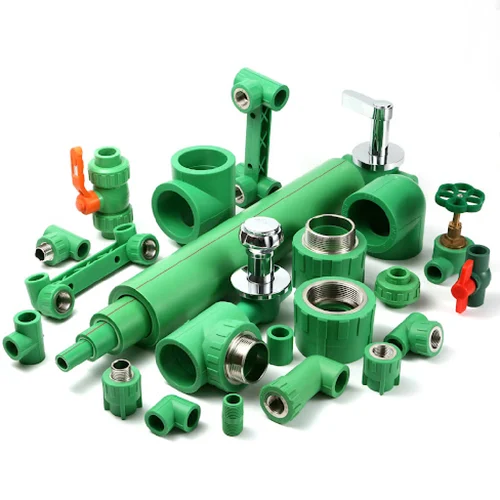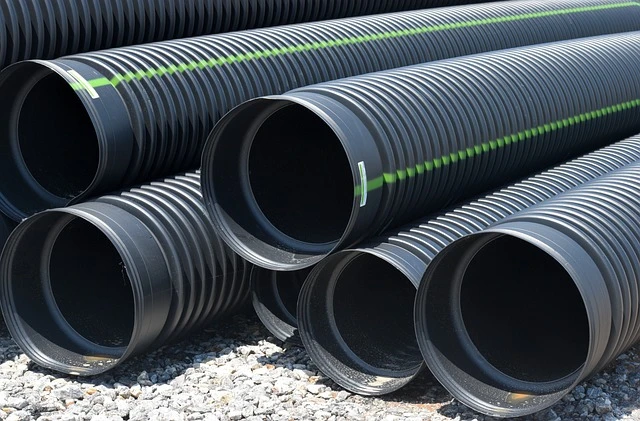Introduce PPR Pipe
In the realm of plumbing, PPR (Polypropylene Random Copolymer) pipes have become a preferred choice due to their reliability, versatility, and cost-effectiveness. As technology advances, the designs and fittings associated with PPR Pipe have also evolved, leading to improved performance and functionality. This article explores the latest PPR pipe fittings and designs, their pricing, and reviews to help you make informed choices for your plumbing projects.
Understanding PPR Pipe and Their Benefits
PPR pipes are lightweight, durable, and resistant to corrosion, making them ideal for various applications, including hot and cold water distribution, heating systems, and industrial use. Here are some key benefits:
- Durability: PPR pipes have a long lifespan, often exceeding 50 years.
- Temperature Resistance: They can withstand temperatures up to 95°C (203°F).
- Chemical Resistance: PPR is resistant to a variety of chemicals, making it suitable for industrial applications.
- Ease of Installation: The lightweight nature of PPR pipes facilitates easier transportation and installation.
- Low Maintenance: PPR pipes require minimal maintenance compared to traditional materials.
Latest Trends in PPR Pipe Fittings
PPR fittings play a crucial role in the overall functionality of piping systems. With innovations in design and technology, the latest PPR pipe fittings have improved performance, durability, and ease of installation.
1. Socket Fusion Fittings
Socket fusion fittings are designed for joining PPR pipes through a heating process. These fittings are now available in various shapes and sizes, ensuring compatibility with different piping systems.
- Price Range: Approximately $0.50 to $5.00 per fitting, depending on size and type.
- Review: Users appreciate the simplicity of the socket fusion process, which ensures a strong and leak-free connection. However, proper training is necessary to achieve optimal results.
2. Elbow and Tee Fittings
Elbow and tee fittings are essential for changing the direction of pipes and branching out the system. Recent designs offer enhanced flow characteristics and reduced pressure drops.
- Price Range: Elbow fittings cost between $1.00 to $3.00, while tee fittings range from $1.50 to $4.00.
- Review: These fittings are praised for their reliability and ease of installation. Customers report fewer leaks and better water flow compared to older designs.
3. Reducer Fittings
Reducer fittings are used to connect pipes of different diameters. The latest designs feature smoother transitions to minimize turbulence in the flow.
- Price Range: Reducers typically cost between $2.00 to $6.00.
- Review: Users find that modern reducers effectively prevent pressure loss, making them a worthwhile investment.
4. Cap and Plug Fittings
Cap and plug fittings are used to seal the ends of pipes. New designs come with improved sealing mechanisms, ensuring a tight fit.
- Price Range: These fittings generally range from $0.50 to $2.00.
- Review: Customers report excellent performance in sealing and blocking flow, reducing the risk of leaks in dormant sections of the system.
5. Transition Fittings
Transition fittings allow for connections between PPR pipes and other materials, such as metal pipes. Recent innovations focus on creating durable and leak-proof joints.
- Price Range: Transition fittings can range from $3.00 to $10.00.
- Review: Users appreciate their flexibility in mixed-material systems, although some caution about the need for proper installation to avoid issues.

Latest Designs in PPR Pipe Systems
With advancements in manufacturing technology, the design of PPR pipes and fittings has also seen improvements. Some of the latest designs include:
1. Smart PPR Pipe
Smart PPR pipes incorporate sensors to monitor water flow and temperature, providing real-time data for system management. These are particularly beneficial in large industrial applications.
- Price Range: Smart PPR pipes can range from $5.00 to $15.00 per meter.
- Review: Users value the enhanced monitoring capabilities, which help in maintaining optimal system performance.
2. Multi-layer PPR Pip
These pipes feature multiple layers that enhance strength and thermal insulation. They are suitable for high-pressure applications and are designed to reduce thermal loss.
- Price Range: Multi-layer PPR pipes range from $2.00 to $10.00 per meter.
- Review: Customers report excellent thermal performance and durability, making them ideal for hot water systems.
3. Color-coded PPR Pipe
Color-coded systems facilitate easy identification of pipe types and intended use, enhancing installation efficiency and safety.
- Price Range: Color-coded pipes typically cost about the same as standard PPR pipes, around $1.50 to $8.00 per meter.
- Review: Users appreciate the visual cue for different applications, reducing the chances of installation errors.
4. Flexible PPR Pipe
Flexible PPR pipes can be bent and shaped, allowing for more dynamic installations without the need for additional fittings.
- Price Range: Flexible PPR pipes generally range from $3.00 to $10.00 per meter.
- Review: Users find these pipes particularly beneficial for complex layouts, minimizing the need for joints.
5. Anti-bacterial PPR Pipe
These pipes are treated to inhibit bacterial growth, making them ideal for drinking water applications. This innovation addresses health concerns in plumbing systems.
- Price Range: Anti-bacterial PPR pipes are priced between $3.00 to $12.00 per meter.
- Review: Customers appreciate the added peace of mind regarding water safety, especially in residential plumbing.
Comparing Prices of PPR Pipe and Fittings
When selecting PPR pipes and fittings, it’s essential to consider the price in relation to quality and performance. Here’s a quick comparison of average prices based on recent market trends:
| Type of Fitting | Price Range (USD) | Quality Rating |
|---|---|---|
| Socket Fusion Fittings | $0.50 – $5.00 | 4.5/5 |
| Elbow and Tee Fittings | $1.00 – $4.00 | 4.6/5 |
| Reducer Fittings | $2.00 – $6.00 | 4.7/5 |
| Cap and Plug Fittings | $0.50 – $2.00 | 4.8/5 |
| Transition Fittings | $3.00 – $10.00 | 4.4/5 |
| Multi-layer PPR Pipes | $2.00 – $10.00 | 4.6/5 |
| Smart PPR Pipes | $5.00 – $15.00 | 4.7/5 |
Conclusion
The evolution of PPR pipe fittings and designs has significantly improved their performance, efficiency, and ease of use. Whether you are working on residential plumbing, commercial systems, or industrial applications, the latest PPR products offer solutions tailored to your needs. With a range of prices and innovative designs available, investing in quality PPR fittings and pipes is a smart choice for any project.
Frequently Asked Questions (FAQs)
- What are the advantages of using PPR pipes?
- PPR pipes are durable, resistant to corrosion, and can handle high temperatures, making them suitable for various applications.
- How do I choose the right PPR fittings for my project?
- Consider the application type, required pressure ratings, and compatibility with existing systems when selecting fittings.
- Can PPR pipes be used for hot water systems?
- Yes, PPR pipes are designed to withstand temperatures up to 95°C, making them ideal for hot water applications.
- How do I install PPR fittings?
- PPR fittings can be installed using socket fusion or mechanical joints. Proper training is recommended for socket fusion to ensure leak-free connections.
- Are PPR pipes environmentally friendly?
- Yes, PPR pipes are recyclable and have a long lifespan, reducing environmental impact compared to other materials.

















